Scary as it might be, Twitter is a treasure trove of truth. With the tap of a finger, anyone (including your meeting attendees) can share their unfiltered opinion on a massive scale – the good, bad and ugly.
We’ve compiled a list of brutally honest tweets that point to common meeting mistakes. The banter can be harsh but there are lessons to learn.
Read on to avoid being the target of snarky tweets and, more importantly, get ideas on effective ways to engage your audience.
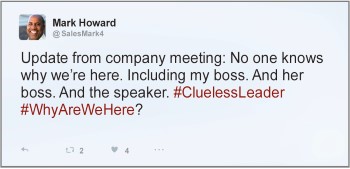
Without a clear objective, your meeting becomes an investment without any hope of return. Why did you pull everyone away from their work? If you don’t know why, your audience won’t either.
Figure out your key takeaway. It needs to be something definable. Actionable. Worthy. “Motivate people” doesn’t count. How does that translate into action steps? Business objectives? Big picture ideas? Whatever it is, make it count.
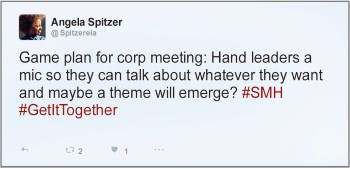
The CEO and COO are in total agreement about the meeting purpose. The problem? They didn’t loop in the Director of Sales. Or the head of HR. Or, um, the meeting planner. Oops. The disjointedness is palpable.
Start with the end in mind and get everyone on the same page, not just the C-suite. Don’t stop at message alignment. Is this a casual event or formal? High-energy or focused? What should it feel like? Give the vision a clear identity everyone knows and understands.
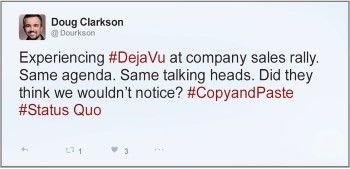
Repeating the same meeting year after year implies that innovation isn’t important and complacency is acceptable. If your meetings haven’t evolved since last year, cancel them.
Insist on a fresh start. Surprise your audience. You don’t need literal fireworks to create a spark; offer a new perspective and a timely, relevant message. This isn’t about one-upping yourself. It’s about getting better. Bolder, clearer, sharper. Think outside the box and your attendees will too.
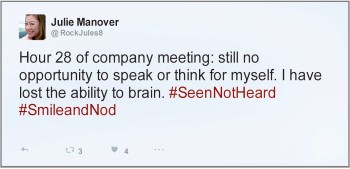
Failing to engage your participants means you don’t have participants—you have attendees. Attendees are passive. They’re not invested. If you don’t give participants responsibility for being involved, they won’t feel accountability to enact the message.
Focus on engagement before, during and after the event. Don’t talk at them; foster active learning and participation. Better yet, let them define what the message means for them and their position. An audience with an active role will be more invested and committed to the end goal.
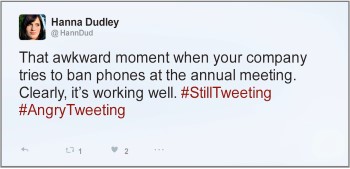
Technology is stiff competition but banning personal devices doesn’t work. At best, it’s condescending (the “leave your phone at the door” policy is typical in middle schools). At worst, you’ll have an anxious audience that feels disconnected and resentful.
Instead of fighting technology, embrace it. Encourage participants to use their devices for real-time feedback. Create a social media conversation. The chatter is going to continue far beyond the walls of the event itself. Why not facilitate the conversation by letting participants weigh in on their own terms?
Your participants will talk. The only question is: what will they say? To learn more about how we can help you inspire positive chatter about your meeting, email info@biworldwide.com.
The best way to get started is to get in touch
















